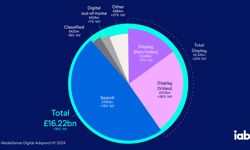Of all the research tasks commissioned by publishers, one of the perennials that cause many debates is researching the redesign and re-launch of a magazine. It can be a daunting place for a researcher to tread. As a researcher, you’re aware that much blood, sweat and tears has been invested in getting to grips with the redesign and the research will be minutely scrutinised – not just by the publishing company, but the design agency as well. They, along with the editor, deserve research that is sensitive to new ideas, yet the way is strewn with stories of "butchered ideas" and overly literal interpretation. Over the years, I’ve noticed that a number of issues continually resurface and there’s considerable benefit to be gained from some sense of best practice. This is what I hope to share with you over the next couple of pages, borrowing from recent research that we conducted for TSL Education.
Placing the redesign into a user context
It’s very tempting to make the redesign the hero of the research. After all, the typical group lasts less than two hours and there’s a lot to cover. But you do that at your peril – there is only one hero and that’s the reader.
Inevitably, a lot depends on the part research played in the thinking that lead-up to the re-design, but even here it’s dangerous to leap in. Amongst researchers, the adage is that you often gain the most acute insights during the ‘warm-up’ when respondents talk freely about the issues they face at work and home. With the TES, we decided to conduct the research into the redesign in two phases: a preparatory stage that investigated how teachers use different types of information and what their priorities are, as well as showing concept boards of how TES might look to gauge the appetite for change and the direction of travel. The second phase involved the testing of a fully dummy newspaper and magazine.
This two-phase approach more than proved its worth, enabling the editorial and management team to have an unambiguous picture of the space TES could inhabit – defining the demand for various types of content. It also allowed the team to reflect on initial designs, learning from the process and ensuring that the resulting dummy pushed the boundaries on key areas of interest.
Understanding what information is being used and just as importantly, when?
The important questions revolve not so much around what works and what doesn’t, but how the target audience is consuming information and how they relate to what’s being presented to them. As an example of this, one of the early lessons we learned was the importance of a Friday publishing date. The rewards of being read at the weekend – away from the weekday noise and competitive clutter – are considerable, but the existing format was unsympathetic to this.
This understanding provided TES with enormous editorial scope for engaging the teacher on a personal, not just professional level. From there, it was a case of understanding the role that each of the main parts of TES had to play and where and when it was most relevant. It became clear that the constituent parts of the print offering – newspaper and magazine – could have a powerful impact of extending both reading occasions and reader appeal.
Coping with the shock of the new
Presenting respondents with bold new designs can produce some pretty emphatic reactions – negative as well as positive – providing many a researcher with tempting soundbites to insert in the final report. As many advertisers and designers will attest – when in the wrong hands, research can be a lethally blunt instrument. It’s true that the initial visceral reaction is all that matters when it comes to survival in the newsstand jungle, but be careful that these initial utterances of the respondent do ring true. There are a number of reasons why they may not:
* How many times have you found yourself inarticulately trying to express what you feel without being able to put it exactly into words, only to think later "I wish I’d said that"?
* Be aware that overly-protective loyal readers can react vigorously to anything different. They need time to assimilate things and come to terms. Quite often they will.
* Others may be concerned about what others may think and not say what they really feel.
This is where the need for sensitive moderation and analysis is vital. There are a number of techniques that can be employed to sense check these initial utterances.
It’s a good idea to employ a series of ‘triangulation points’ throughout the research so you can identify at which points respondents start to modify their views (they often do, and observers can mistake this for respondents contradicting themselves). In the TES research, we ‘unpacked’ the experience stage by stage, allowing respondents to comment at various stages – on the first exposure to cover, right through to after reading. During the analysis we noted at what point opinions changed and what element was provoking this. This constant reviewing also enabled us to understand whether the cover was successfully communicating the inside of the publication and that the elements were consonant with each other.
To overcome respondents’ concerns over what others might think of their opinions, we utilise simple projection techniques that give respondents permission to admit confusion or disagree with others in a non-confrontational way. Sometimes it’s as simple as asking what they feel other people might think. Cartoons with thought bubbles are another useful variation on this.
Research the concept, not the dummy
It’s tempting when you’ve invested your time in a single dummy to want to get the maximum out of it in research. But resist the temptation of digging too much into the detail and writing too rigid a set of rules. Look for the sentiment and make sure you can see the wood for the trees. On TES we were aware that, however important, we were researching a paper and magazine that would be history when the next issue appeared the following week! For the newspaper, we showed cover versions with different lead stories and designs. For another recent redesign for the weekly British Medical Journal, we displayed ten different magazine covers to help respondents get a feel for how the new design would translate over time.
If it ain’t mentioned, it ain’t important
A common worry behind the viewing mirror is that "they haven’t noticed such and such – can you ask them about it?" You can. But bear in mind the information you glean should be put into perspective. The important reactions are those that are spontaneously mentioned. In any research, try and focus on the visceral – how’s it coming across? The more you try and nudge people, the more artificial the research becomes.
Paint a memorable mind picture of the reader for the editorial team
Segmenting respondents’ reactions is a crucial part of the research process – not just in terms of the main job titles or demographics such as age or gender. It helps if the research debrief melds consumer behaviour with attitudes towards the product in a way that brings it all alive. For the TES, we wrote the ‘Twitcher’s Guide to Teachers’ – tongue firmly in cheek, but with some (we hoped) memorable mind pictures for editors to latch onto.
One example was the sparrow. The point we needed to stress was how consumer behaviour (quite outside their lives as teachers) influenced their relationship with the TES and what the relaunch needed to do if it was to successfully engage with this segment of the audience. In all, six profiles were drawn up – each with distinct usage and attitudinal characteristics. The bottom line was to identify the common threads that ran across key segments.
The impact on the marketplace
So what happened after the re-launch? Newsstand sales increased by 15% and the subscription levels grew by 18% within five weeks of the re-launch. It’s early days, but this is a promising sign that the redesign has had a real impact with the target audience. So, who says that research can’t have a measurable ROI?
FEATURE
Researching the redesign: getting it right
Sooner or later every publisher comes face to face with the realisation that the formula doesn’t work as well as it used to and needs to be overhauled. Yet, despite the fact that this is a common activity in the publishing world, it can be a lonely and nerve-wracking experience: being open to new thinking, yet at the same time maintaining focus and creating order out of chaos. Anthony Ray revisits a recent redesign for the Times Educational Supplement and draws some conclusions about how sensitive research can enrich this process…










